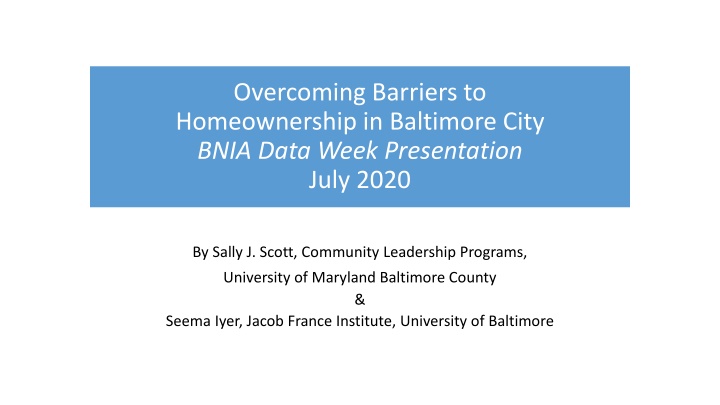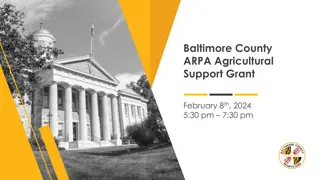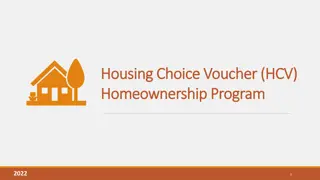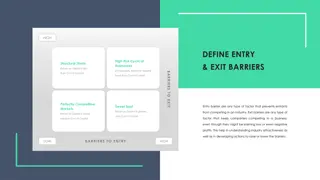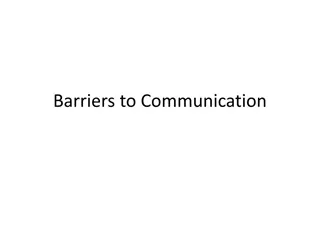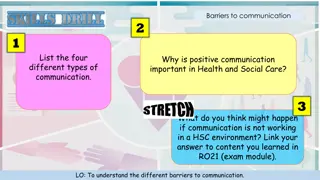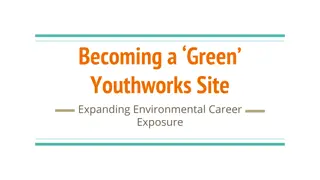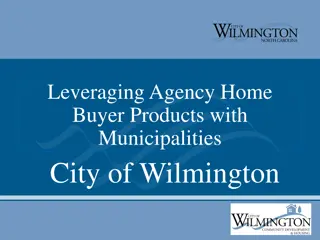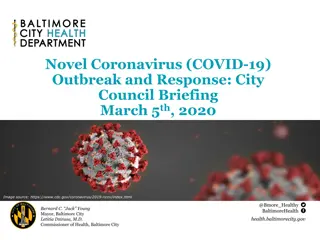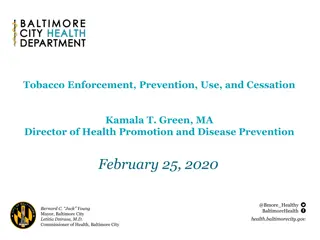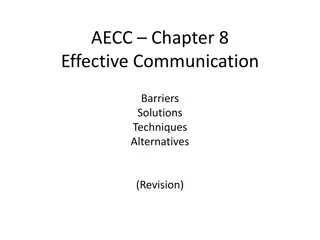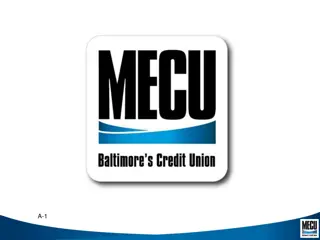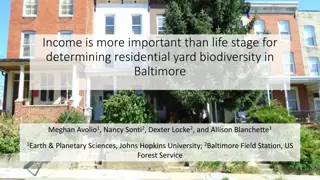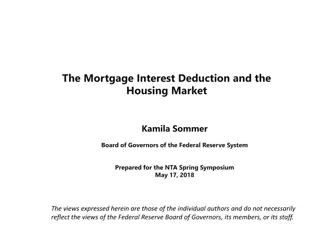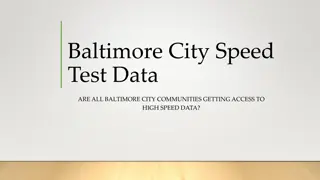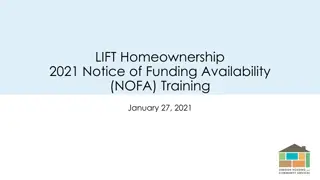Overcoming Barriers to Homeownership in Baltimore City Data Analysis
Delve into persistent racial inequalities affecting homeownership in Baltimore City, exploring trends, data analysis, and proposed solutions to bridge income and wealth gaps. Quantitative and qualitative research methods show impacts on Black communities and highlight areas for targeted interventions.
Download Presentation

Please find below an Image/Link to download the presentation.
The content on the website is provided AS IS for your information and personal use only. It may not be sold, licensed, or shared on other websites without obtaining consent from the author.If you encounter any issues during the download, it is possible that the publisher has removed the file from their server.
You are allowed to download the files provided on this website for personal or commercial use, subject to the condition that they are used lawfully. All files are the property of their respective owners.
The content on the website is provided AS IS for your information and personal use only. It may not be sold, licensed, or shared on other websites without obtaining consent from the author.
E N D
Presentation Transcript
Overcoming Barriers to Homeownership in Baltimore City BNIA Data Week Presentation July 2020 By Sally J. Scott, Community Leadership Programs, University of Maryland Baltimore County & Seema Iyer, Jacob France Institute, University of Baltimore
Persistent Racial Inequalities Report written in 2019, before the COVID-19 pandemic hit. Prior to the pandemic, clear evidence that we need to address racial income, wealth and homeownership gaps. Intense urgency now Black families face greater risk of contracting COVID while suffering housing insecurity.
Initial Focus of Report Question posed by the Abell Foundation would expanding flexibly underwritten home loans, and offering more extensive first-time homebuyer incentives, create more homeowners in Baltimore? Time frame we explored: 2010 (captures impact of Great Recession) to 2017 -- last year full data sets were available when we were writing this paper in summer and fall 2019.
Data Used Quantitative Focus on neighborhood level, connections to income and race Homeownership and mortgage statistics, using American Community Survey, Maryland Property View, and Home Mortgage Disclosure Act (HMDA) data Qualitative Review of national and local documents on homeownership, especially analyses of structural racism and decline in Black homeownership Interviews with leaders of nonprofit organizations -- especially housing counseling, affordable homeownership developers -- lenders and realtors. Many thanks to all the people who gave of their time and expertise, including Baltimore Equitable CDN s Advocacy and Policy Committee members.
Trends in Owner-Occupancy 2010 to 2017 -- Southwestern edge hit hardest -- Areas with highest rates of loss mostly not in city core -- Throughout City, loss of Black homeowners -- Increases in homeownership occurred where Black populations falling, except where there are long-term revitalization initiatives
Second View of Owner- Occupancy 2010-2017 -- In West, Southwest, East, and Northeast: areas of solid, primarily Black homeownership impacted -- Also loss of homeowners in areas with higher percentage of rental units -- Lower rates of decline along waterfront, in City core, and in North and Northwest Baltimore
Baltimores System of Homeownership Promotion To help people buy existing homes: extensive array of services and incentives involving homebuyer education, homeownership counseling, nonprofit organizations, Live Baltimore, Baltimore City, State of Maryland, Federal government, local employers, foundations. Nonprofit affordable housing developers also do complete rehabs of existing homes, construct new affordable homes, reach out to qualified buyers, and provide education and counseling for renters who want to become homeowners.
Results of Existing System Success in helping homebuyers, especially those who can navigate complex system (some with help) and are financially close to ready. DHCD s Office of Homeownership, working closely with Live Baltimore, provided $3.3 million in incentives in FY 2019. From all sources, multiple loan products, down-payment options, tax credits, renovation programs complexity without scale. Affordable housing developers providing sustainable homeownership to around 100 people a year. Valuable for those who move into those homes, but not on a scale to impact City s homeownership rates.
Barriers to Homeownership Two Pools of Aspiring Homebuyers: Smaller pool ready to buy, with education & incentives Larger pool -- lack of income, poor credit, high debt Citywide, from 2010 to 2017, a 30% increase in the median price of homes in Baltimore outstripped a 21% increase in median income. Fundamental challenge decades of structural racism, compounded by the Great Recession, have contributed to deep-rooted income, wealth and homeownership gaps for Black Baltimoreans.
How do we change the map? Business as usual won t work. Clear need for new policies at City, State and Federal levels
Recommendations Maintain a Focus on Racial Equity Reach out to Current and Potential Residents Keep effective housing education and counseling, make it easier to navigate loans & incentives. Support innovative models of financial coaching and outreach to prepare people to buy. Work with current homeowners, especially elderly, to preserve existing affordable homeownership. Change Frameworks & Systems Create a multi-sector, citywide affordable housing policy -- address the high number of vacant and abandoned properties. Connect homeownership and community development need affordable homes in inclusive neighborhoods where people want to live. Support Federal Policies that address shortages of both rental and homeownership housing. Especially important in the COVID-19 era.
Thank you! Contact information: Sally J. Scott, sjscott@umbc.edu Seema Iyer, siyer@ubalt.edu
